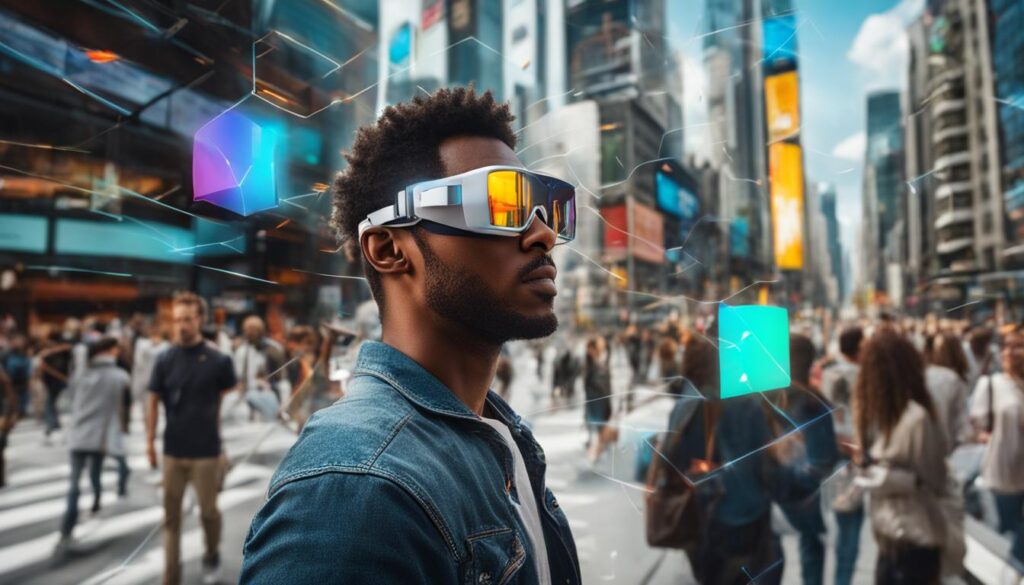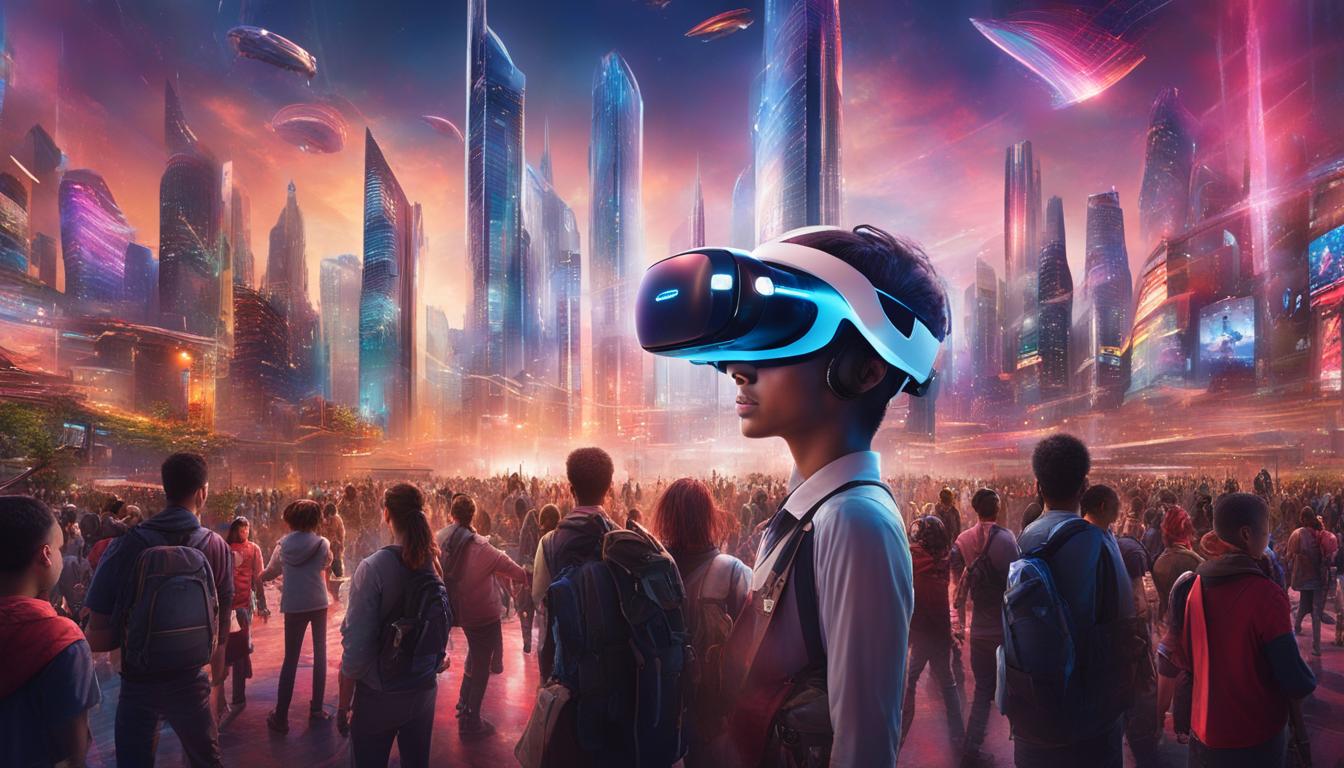Welcome to the exciting world of augmented reality! As technology continues to evolve, so does our ability to transform the way we interact with the world around us. In this article, we will explore the incredible growth and potential of augmented reality, and how it is expected to become a staggering $150 billion industry in the near future.
A recent report from Digi-Capital has projected that augmented reality devices, such as Microsoft’s HoloLens, will surpass virtual reality in terms of market size and growth. By 2020, the forecasted revenue for augmented reality is a remarkable $120 billion, while virtual reality is expected to reach $30 billion. This indicates a significant shift towards augmented reality as a mainstream technology with tremendous market potential.
The managing director of Digi-Capital, Tim Merel, believes that the widespread adoption of augmented reality technology will open up new opportunities and revenue streams across various industries. From TV and film to advertising and consumer apps, augmented reality has the potential to disrupt and revolutionize numerous sectors.
Contents
- 1 The Potential of Augmented Reality
- 2 Virtual Reality’s Potential and Challenges
- 3 The Importance of Vision and Immersion
- 4 Conclusion
- 5 FAQ
- 5.1 What is the projected size of the augmented reality market?
- 5.2 How does augmented reality differ from virtual reality?
- 5.3 What industries can benefit from augmented reality?
- 5.4 What are the potential uses of augmented reality?
- 5.5 How does virtual reality compare to augmented reality in terms of market potential?
- 5.6 What factors contribute to a satisfying augmented reality experience?
- 6 Source Links
Key Takeaways:
- Augmented reality is projected to become a $150 billion industry.
- By 2020, the revenue for augmented reality is estimated to be $120 billion.
- Augmented reality devices like HoloLens are driving the sector into the mainstream.
- AR has the potential to disrupt industries like TV, film, advertising, and consumer apps.
- AR has a larger addressable market compared to virtual reality.
The Potential of Augmented Reality
Augmented reality (AR) has the potential to revolutionize our daily lives, offering a wide range of applications beyond core games and 3D films. With the ability to seamlessly blend the real and virtual worlds, AR opens up exciting possibilities for a variety of industries and consumer experiences.
AR can be employed in a-commerce, allowing users to visualize products in their own environment before making a purchase. It can enhance voice calls by displaying real-time information and graphics during conversations. AR also improves web browsing by overlaying contextual information directly onto objects or locations.
Streaming is another area where AR can make a significant impact, enabling immersive and interactive experiences for users. From live events and concerts to virtual tours and educational content, AR has the potential to transform the way we consume media.
Enterprise apps can also benefit from AR technology, providing workers with real-time data and visualizations, improving efficiency and accuracy in various industries such as manufacturing, logistics, and healthcare.
Furthermore, advertising can become more engaging and interactive with AR, allowing brands to create unique and immersive experiences that capture consumers’ attention. AR-based consumer apps and games offer endless possibilities for entertainment and engagement, creating new revenue streams for developers and distributors.
Addressable Market and Revenue Opportunities
The addressable market for augmented reality is significant, comparable to that of smartphones and tablets. As AR becomes more mainstream, it is expected to attract a large user base, driving demand for AR-enabled hardware. This presents substantial revenue opportunities for device manufacturers.
AR software and services could follow a similar economic model to the mobile market. With a growing user base, developers and content creators can generate revenue through app sales, subscriptions, in-app purchases, and targeted advertisements.
The Future of Augmented Reality
As the AR market trends continue to evolve, it is clear that augmented reality has immense potential to shape our future, ushering in a new era of digital experiences and convenience. With improvements in technology and increasing industry adoption, the value of the AR market is forecasted to grow exponentially.
Comparison of AR and VR Markets
| Augmented Reality (AR) | Virtual Reality (VR) | |
|---|---|---|
| Primary Focus | Everyday applications, enterprise, advertising, consumer apps | Core games, 3D films |
| Addressable Market | Comparable to smartphones and tablets | Niche market, primarily gaming and 3D films |
| Revenue Potential | Large potential user base and hardware revenues | Focused on niche markets, limited additional revenues |
| Future Outlook | Promising growth with industry disruption and revenue generation | Limited expansion beyond current markets |
Virtual Reality’s Potential and Challenges
Virtual reality (VR) has made significant strides in the gaming and 3D film industries, captivating audiences with immersive experiences. However, the addressable market for VR remains primarily focused on these niche areas. While VR could potentially attract tens of millions of users, its hardware price points are comparable to the console games industry.
“Virtual reality will enable synthetic experiences that are physically larger than we have ever experienced before,” says Palmer Luckey, founder of Oculus VR. “This could have a transformative impact on education, training, healthcare, and even real estate.”
Despite its immersive nature, VR may not generate substantial additional data or voice revenues beyond its existing applications. The technology’s limitations in terms of market reach and revenue potential could hinder its long-term growth.
In contrast, augmented reality (AR) is poised to disrupt the mobile market and has a larger addressable market comparable to smartphones and tablets. While AR may not be as immersive as VR for gaming purposes, it has the potential to seamlessly integrate into our everyday lives, much like smartphones have become indispensable.
AR’s potential lies in its versatility and ability to augment the real world. It can be used for a wide range of applications, including but not limited to a-commerce, voice calls, web browsing, streaming, enterprise apps, advertising, consumer apps, and games.

The Importance of Vision and Immersion
Vision and immersion are key elements in both augmented reality (AR) and virtual reality (VR). Users have high expectations when it comes to the visual quality of AR and VR experiences—they want high-resolution displays without any visible pixels to ensure a truly satisfying and immersive experience. A seamless and realistic visual display enhances the user’s ability to engage with the virtual environment.
Immersion, especially in the case of VR and mixed reality, goes beyond just visual quality. It encompasses various factors that contribute to creating a truly immersive experience. These factors include:
- Position Tracking: Accurate tracking of the user’s movements and position is crucial for a seamless and immersive experience. It allows users to interact with the virtual environment more naturally and enhances the feeling of being present in the virtual world.
- Object Stability: The stability of virtual objects within the environment is essential for creating a convincing and immersive experience. When objects react realistically to user interactions, it enhances the overall sense of immersion.
- Audio Quality: Immersive audio is an essential component of creating realistic virtual environments. High-quality spatial audio helps to immerse users in the virtual environment by providing a sense of depth and directionality.
- User Comfort: Comfortable hardware and ergonomics are crucial for maintaining user engagement and preventing discomfort during extended AR or VR sessions.
However, it’s important to note that not all AR applications require the same level of immersion as VR. AR is more focused on augmenting the real world rather than creating entirely virtual environments. While visual quality and immersion are still important for AR, the emphasis is often on enhancing real-world experiences rather than creating fully immersive virtual experiences.

With advancements in AR technology and the growing demand for immersive experiences, the importance of vision and immersion will continue to shape the future of AR. Whether it’s through high-quality displays, seamless tracking, or realistic audio, enhancing the visual and immersive aspects of AR will play a crucial role in its widespread adoption and success in the market.
Conclusion
With the augmented reality market projected to reach a staggering $150 billion in revenue by 2020, it is evident that this technology is on the brink of a major breakthrough. Of this market, AR is expected to dominate with an estimated value of $120 billion, surpassing its virtual reality counterpart.
While both augmented reality and virtual reality have their unique strengths and applications, AR is poised to capture a larger share of the market and offer more opportunities for growth. The potential for AR to disrupt industries across the board is immense, paving the way for new revenue sources and transforming the way we live our daily lives.
The future of augmented reality looks promising, fueled by advancements in technology and the growing interest from major players in the industry. As AR becomes more accessible and seamlessly integrated into various aspects of our lives, the possibilities are endless. From immersive consumer experiences to revolutionizing advertising and enterprise apps, the impact of AR has the potential to reshape our world.
In conclusion, as the augmented reality market continues to expand, it is clear that AR’s market size, value, and potential are massive. The momentum behind AR is unstoppable, and its future holds great promise for industries and individuals alike. Embrace this exciting technology as it propels us into a future where the boundaries between the physical and digital worlds blur.
FAQ
What is the projected size of the augmented reality market?
The augmented reality market is expected to reach $150 billion by 2020.
How does augmented reality differ from virtual reality?
Augmented reality overlays virtual content onto the real world, while virtual reality creates entirely immersive virtual environments.
What industries can benefit from augmented reality?
Augmented reality has applications in various industries, including TV, film, advertising, consumer apps, and enterprise apps.
What are the potential uses of augmented reality?
Augmented reality can be used for a wide range of applications, such as a-commerce, voice calls, web browsing, streaming, consumer apps, and games.
How does virtual reality compare to augmented reality in terms of market potential?
While virtual reality has a strong presence in gaming and 3D films, augmented reality has a larger addressable market similar to smartphones and tablets.
What factors contribute to a satisfying augmented reality experience?
Factors such as high-quality displays, immersion, position tracking, object stability, audio quality, and user comfort contribute to creating immersive augmented reality experiences.




